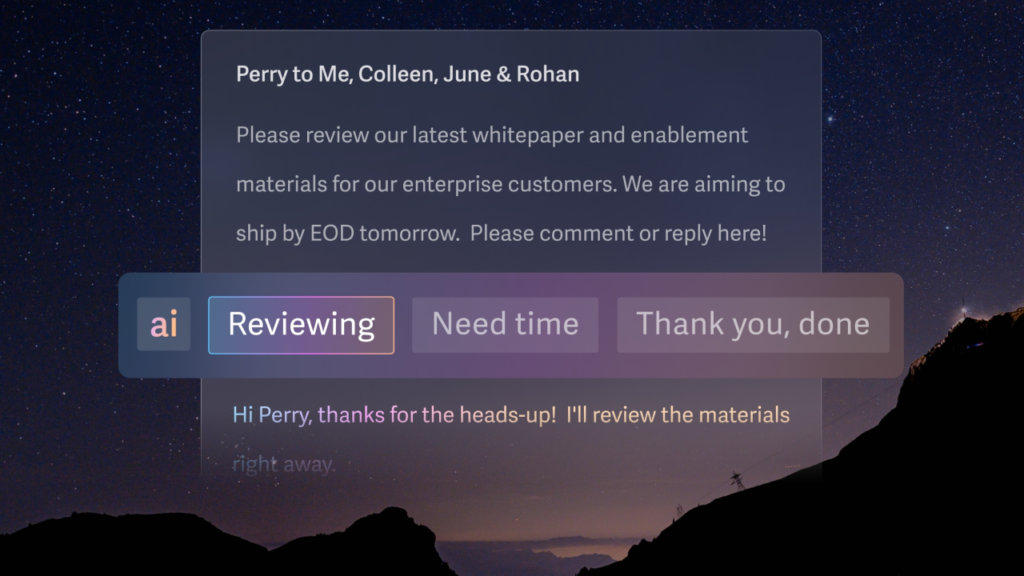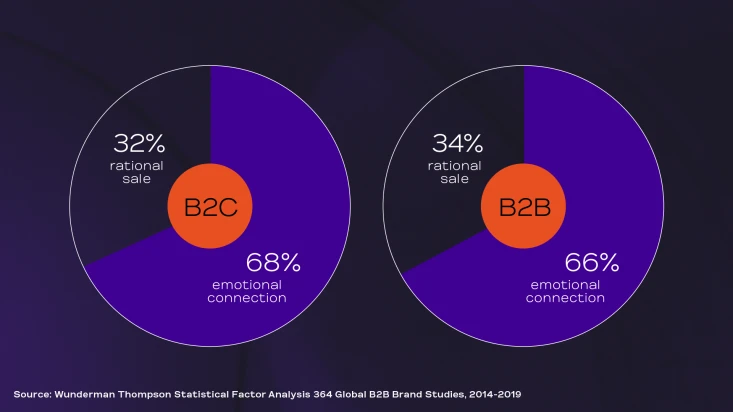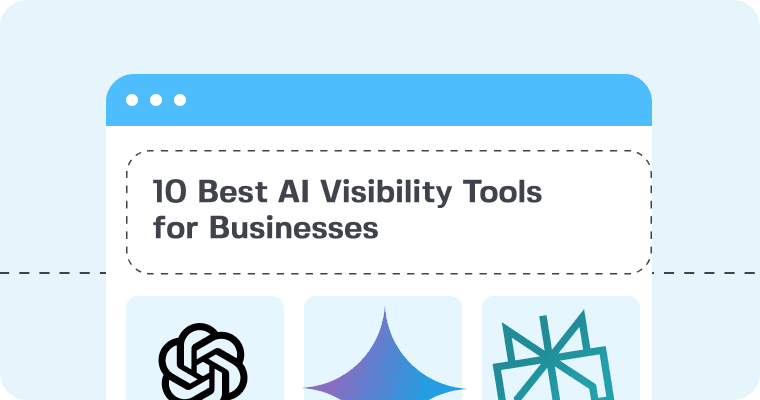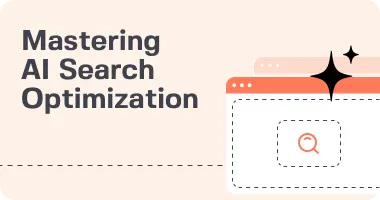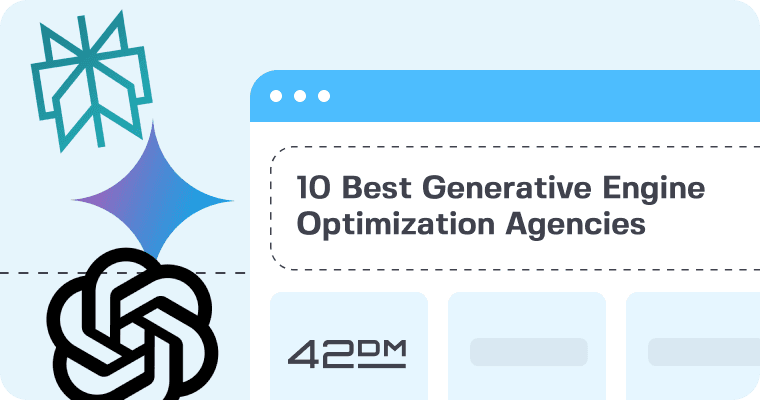The landscape of branding is changing like never before
The branding landscape is evolving faster than ever. We all know how important branding is, but here’s something to think about: Just this month, a newly launched startup, Friend.com, an “AI-friend” wearable device, decided to go all in on building their brand. Out of the $2.5 million they raised, they spent $1.8 million just on the domain name friend.com and poured a big part of the rest into creating emotionally charged, relatable, and pretty provocative brand videos and marketing materials. This company is literally all-in on telling their brand story, but why?

Why would a company make such a bold investment in its brand at an early stage? Friend.com seems to understand that in a rapidly evolving tech landscape, establishing a strong brand identity early is crucial—especially when faced with the growing influence of AI in consumer decision-making. As AI assistants like Siri, Alexa, and Google Assistant become more integral to our lives, they also become key players in the consumer journey. They will evolve to AI-driven gatekeepers. And these AI-driven gatekeepers are not just tools; they’re becoming the first point of contact between consumers and brands.
Imagine this: in the coming years, when you ask Siri to order a new gadget or book a restaurant, if you don’t specify a brand or venue, Siri will make the decision for you—or at least present a shortlist for you to choose from. Friend.com’s substantial investment in its brand is a strategic move to ensure it stands out in these AI-curated shortlists, where competition will be fierce and established brands are likely to dominate.
So, what can a new product do to ensure it makes it into the consideration set? The key is to build direct relationships with customers and make sure the product is memorable—in other words, they need to build a strong brand. This means that the power of branding is becoming more important than ever. But how do you create a brand that truly stands out? The answer lies in tapping into something AI can’t replicate: human emotions.
While emotions can help your brand differentiate itself, emotional branding isn’t a guaranteed path to success. It requires a deep understanding of your audience and comes with challenges, such as navigating cultural differences and avoiding the risk of appearing inauthentic.
So the emotional connection is more powerful than you think
Why is this so significant? Because people crave emotional connections with businesses—they want ads that make them feel something. That’s exactly what Friend.com’s strategy is tapping into. This startup is making waves with a product centered on emotions: a wearable AI companion—a $99 friend in a necklace that listens to you all day. Their marketing goes beyond just presenting facts; it’s all about creating feelings. They’re positioning their product not just as another Alexa—a handy tool with a human-like shell—but as a true friend, one that knows exactly what to say when you need it most. Creepy? Yes. Privacy intrusive? Definitely. Did we see this coming? Of course. But let’s look at it from a marketing perspective.
 |  |
They’ve made a bold move by going all-in on brand marketing, and as a result, their traffic has skyrocketed. They’ve garnered massive media coverage, boosted their SEO, and became a visible market player within weeks. Their CEO, Avi Schiffmann, spent an eye-popping $1.8 million of their $2.5 million funding just to buy their domain name. Crazy? Maybe. But it got people talking. Schiffmann believes that this significant investment will actually save money on marketing in the long run by making their brand instantly recognizable. And how did they do it? They built a powerful story—emotional, provocative, and very authentic—the kind of story that lays the foundation for a leading brand.
This strategy is relevant not only for B2C tech; it’s becoming even more crucial in B2B. In the end, a new brand will struggle to navigate the rational decision-making process in a B2B organization. They’ll face numerous objections on their way to closing a deal, or they can overcome those objections by appealing to the emotional part of our brains. Because at the end of the day, business decisions are made by people, not companies. We rely on both the emotional and rational parts of our brains when making choices. So even for B2B brands, it’s time to move beyond purely corporate language and start embracing the power of emotion.
Why emotion matters in B2B tech branding?
B2B tech brands often focus on the rational side of the brain.. They present facts, specs, and ROI to appeal to logical decision-making. This approach fits well with AI tools like ChatGPT. But then we have millions of “#1 B2B software for teams,” all of them boosting ROI by 300%—whatever that means. But no. Superhuman, for example, knows this approach isn’t enough. They work with the irrational left side of the brain on top of addressing the rational side. The question is, how? Through emotion. Balance with solid, data-backed rational value.

Let’s explore how others are doing it:
- Superhuman. Take Superhuman, for example. They brand themselves as the fastest email experience ever made, targeting high-performing teams who value efficiency and productivity. It differentiates itself by offering a premium, fast, and intuitive email service that eliminates email anxiety and improves response times. By focusing on the emotional aspect of email productivity, they create a sense of urgency and importance for their product.
Their video ads brilliantly utilize nostalgia, relatability, and emotional storytelling. The ads tell the story of the evolution of email, evoking happiness and a sense of wonder before concluding with a call to be faster with emails using Superhuman. It’s a perfect blend of emotional and rational messaging, making their brand memorable and desirable. The ad works because it humanizes the technology, showing how it fits into the daily lives and routines of users. It connects on an emotional level by highlighting common frustrations with email and offering a solution that feels personal and impactful. You can watch their ad here.
- Friend.com Friend.com takes a similar approach in the AI companion space, but with an even bolder strategy. Their $1.8 million domain investment generated significant publicity, positioning them as an instant player in the market. It was a gamble, sure, but it created instant brand recognition and sparked conversations about AI companionship.
Their advertising strategy focuses on the emotional connection between users and AI companions, resonating with those feeling lonely in our increasingly digital world. They’ve aired polarizing ads on social media showcasing their AI-powered wearable. These ads have generated mixed reactions, from excitement about the potential of AI companionship to concerns about privacy and the nature of human-AI relationships. But love it or hate it, Friend.com has succeeded in creating a buzz and differentiating itself in a crowded market.
- Mailchimp. Similarly, Mailchimp has mastered the art of emotional branding in the B2B space. Mailchimp brands itself as a fun, approachable, and helpful partner for small businesses and entrepreneurs. They differentiate themselves by creating a brand voice that is quirky and relatable, standing out in a space that is often seen as dry and technical. Mailchimp’s focus on empowerment and growth resonates deeply with their audience.
Their funny and warm ads appeal to small businesses and entrepreneurs, creating a brand that feels approachable and relatable. By focusing on the human side of their audience, Mailchimp has built a loyal customer base that loves their brand. Their advertisements work because they emphasize the journey of small business owners, recognizing their struggles and celebrating their successes. The humor and warmth in their messaging make the brand feel like a supportive partner rather than just a service provider. You can watch one of their ads here. - Adobe. Constant visibility is expensive for big companies. Some big names also try hard to be top-of-mind on the emotional side of the brain and deserve to be mentioned as an example. Take Adobe, for example. They offer technical tools but brand themselves emotionally. Adobe differentiates itself by speaking to the creative aspirations of their users, not just their practical needs. They position their brand as an enabler of creativity and innovation, which resonates deeply with their audience. This strategy – leading with emotion before building up rational arguments – creates lasting impressions. It plants your brand in the emotional part of the brain, forging connections that go beyond features and pricing.

Adobe’s ad campaigns reflect this strategy by focusing on the creative process and the emotional journey of their users. Their ads often feature artists, designers, and creative professionals sharing their stories and how Adobe’s tools help bring their visions to life. This approach humanizes the brand and builds a strong emotional connection with their audience.
In an AI-dominated world, emotional connections are your secret weapon
As AI increasingly influences buying decisions based on logic, emotional connections become key differentiators. It’s about building a brand that feels right, not just one that makes sense on paper. Emotional branding helps to create a sense of loyalty and trust, which can be crucial in a competitive market. It allows customers to connect with the brand on a deeper level, leading to long-term relationships and advocacy.
Friend.com gets this. They’re not just selling an AI assistant; they’re selling the warm, fuzzy feeling of having someone (or something) there for you. Their bold moves, from dropping big bucks on a domain to their touching ads, show how stirring up emotions can win hearts in a busy market.
So, how can we create B2B tech brands that resonate emotionally, even as AI plays a larger role in decision-making?
Here’s how to hack the system with emotion: 5 simple rules
- Highlight personal benefits: Go beyond the product specs and ROI. Focus on how your solution makes your customer’s life easier, more efficient, or just plain better. Personal value often trumps business value because, at the end of the day, decisions are made by people.
For instance, instead of just talking about how your software increases productivity, show how it helps your customers achieve their goals faster, giving them more time to focus on what really matters. Think of it as selling the benefits of a dream vacation, not just the features of the travel package.
- Build real connections: To truly resonate, your brand needs to connect on a personal level. Share stories and experiences that mirror the challenges and victories of your customers.
This is where thought leadership comes into play—use it to position your brand as a trusted partner who understands their journey. By offering valuable insights and relatable content, you build credibility and trust. Don’t just be another vendor; be the brand that feels like a reliable friend who’s been there and knows what they’re going through. - Ease their fears: Buying decisions, especially in B2B, can be daunting. The stakes are high, and the fear of making the wrong choice is real. Address these fears head-on by showcasing testimonials, case studies, and clear, transparent information that demonstrates your reliability. This isn’t just about listing features—it’s about reassuring your customers that they’re making the right decision. Think of it as holding their hand through the decision-making process, providing them with the confidence they need to choose your brand.
- Stand out from the crowd: In a crowded market, differentiation is key. Many B2B buyers are bombarded with similar claims—everyone’s the “#1 solution,” right? The trick is to cut through this noise by getting creative with your approach, especially in the demand generation phase. When people are in-market, they’re looking for rational choices. But before they even realize they need a solution, you can create a demand by tapping into their emotions. By connecting emotionally early on, you position your brand as the obvious choice before they even start comparing options. It’s about capturing attention with unique, creative content that resonates on a deeper level, making your brand memorable long before the purchase decision is made.
- Don’t cut pricing just yet: Pricing isn’t just about numbers; it’s about perceived value. When customers see personal value in your offering, they’re often willing to pay a premium. Your pricing should reflect the benefits and emotional value your product or service delivers. It’s not just about being competitive on cost; it’s about aligning your pricing with the value you provide. This means positioning your brand as a premium choice that’s worth the investment because it delivers something unique and personally valuable to the customer.
By applying these strategies, B2B tech companies can build brands that not only survive but thrive in an AI-dominated landscape.
Remember, at the heart of every B2B decision is a human being
By tapping into human emotions, values, and aspirations, you can create a brand that stands out in any environment, AI-driven or otherwise. The goal is to craft such a compelling brand experience that, when decision time comes, your brand isn’t just an option—it’s the only choice that feels right, regardless of AI recommendations.

